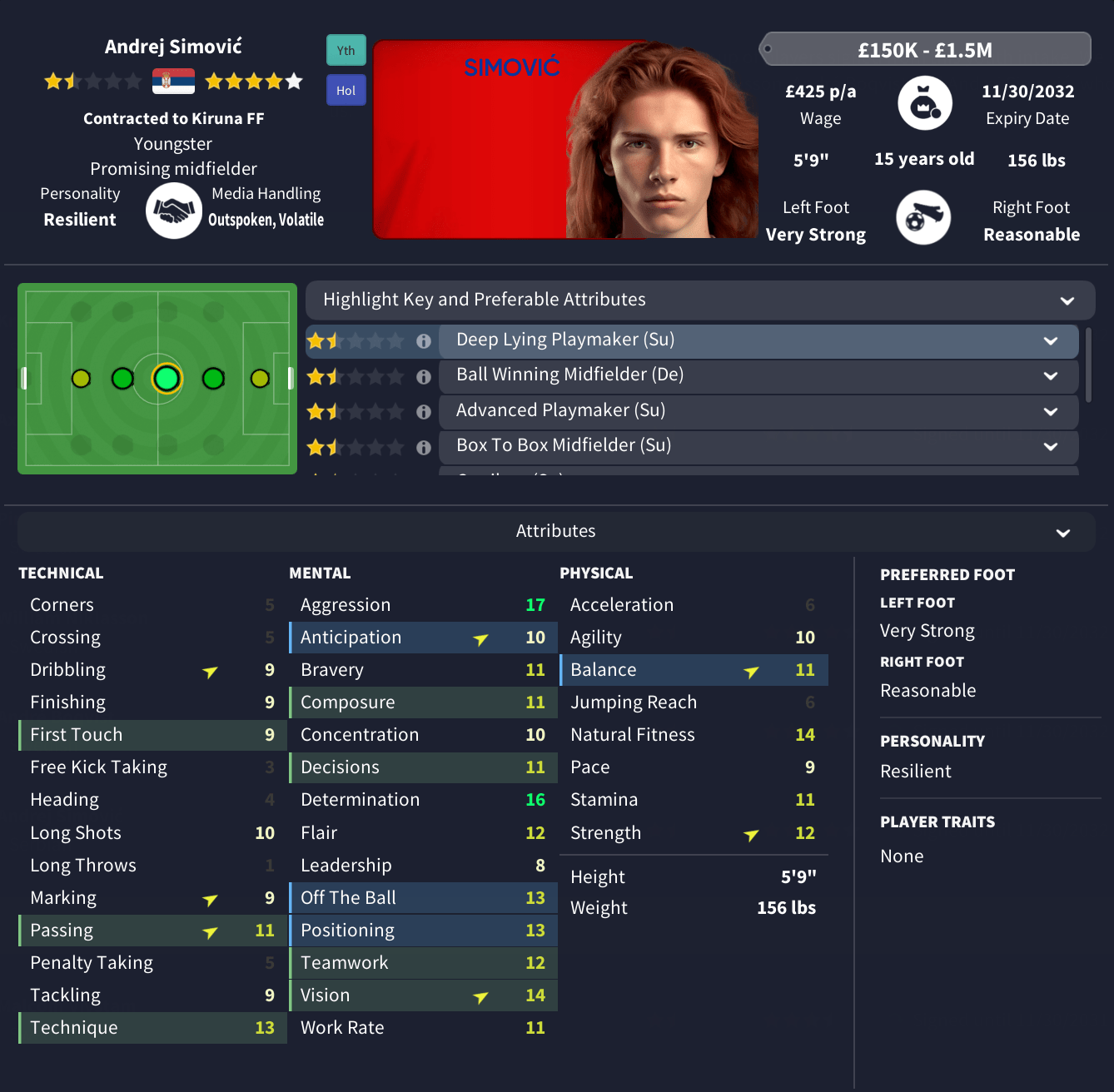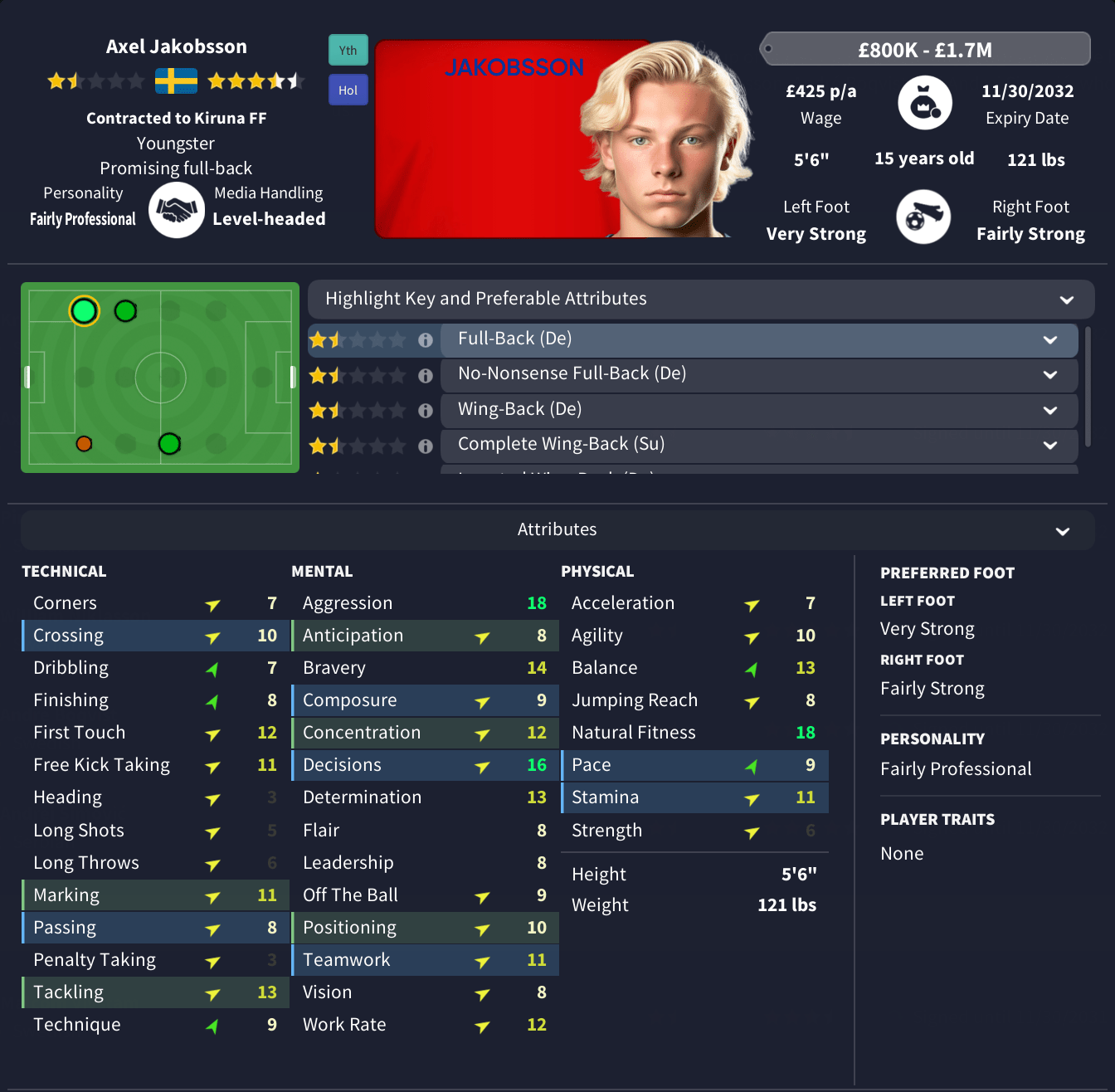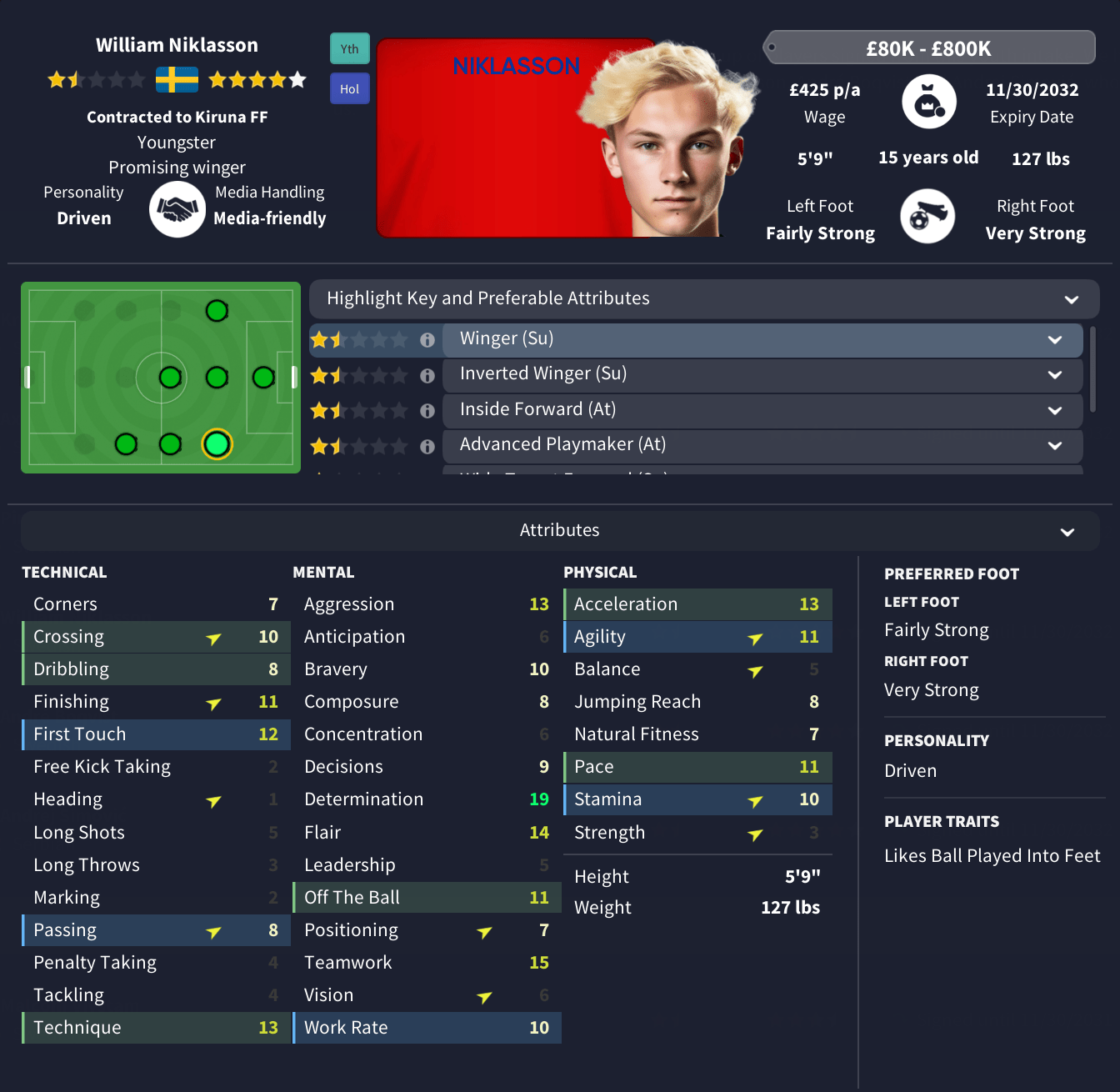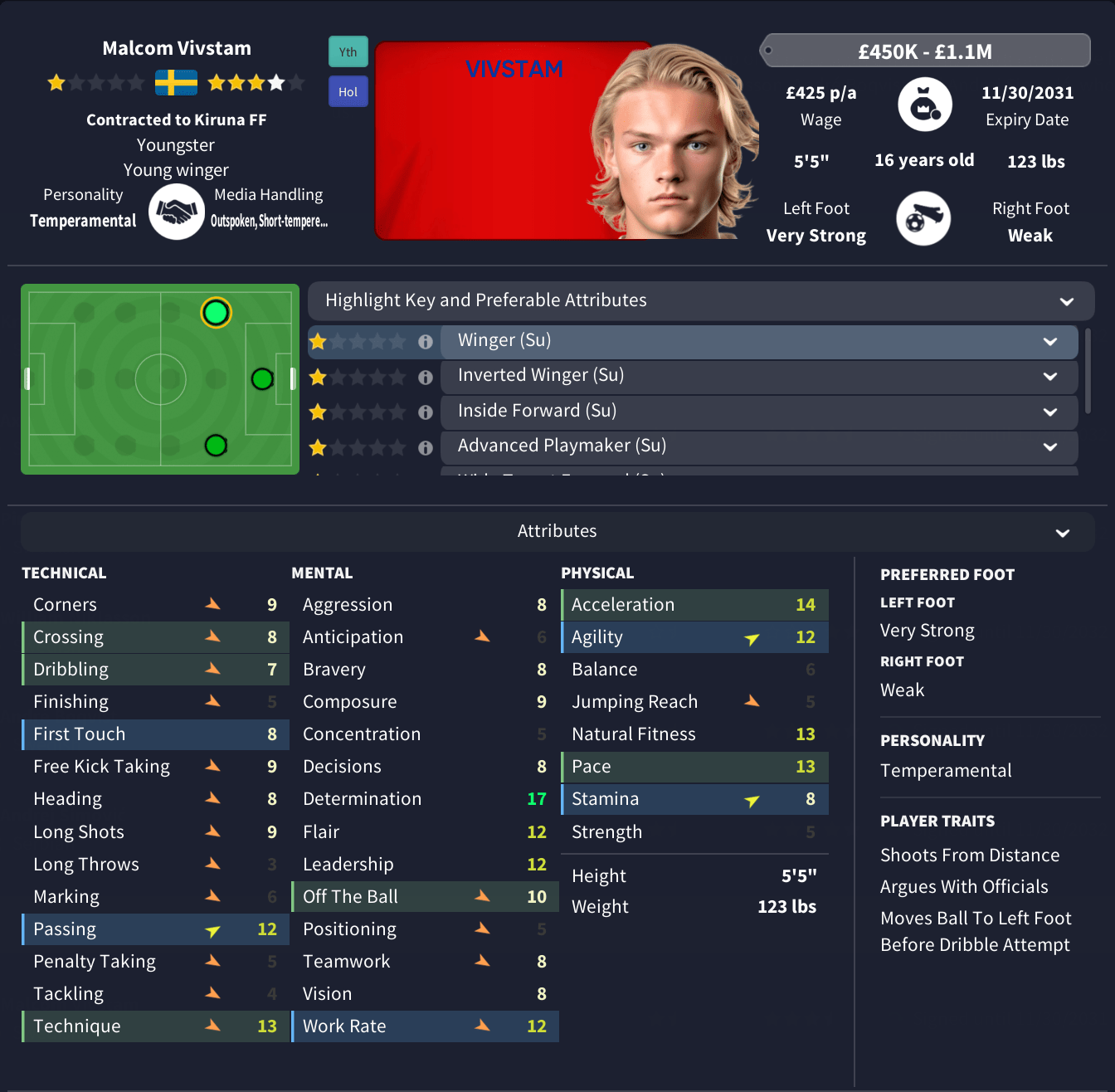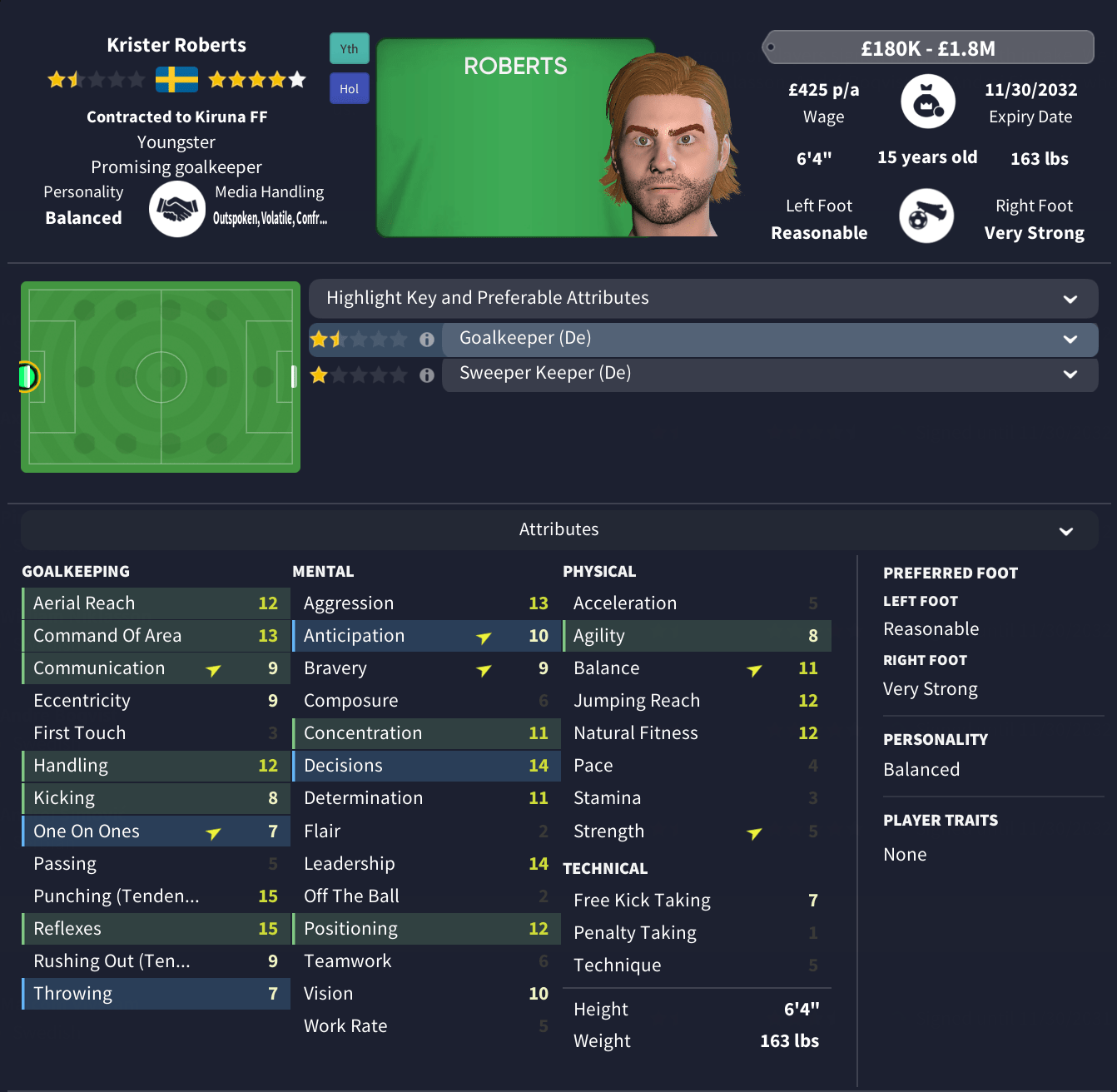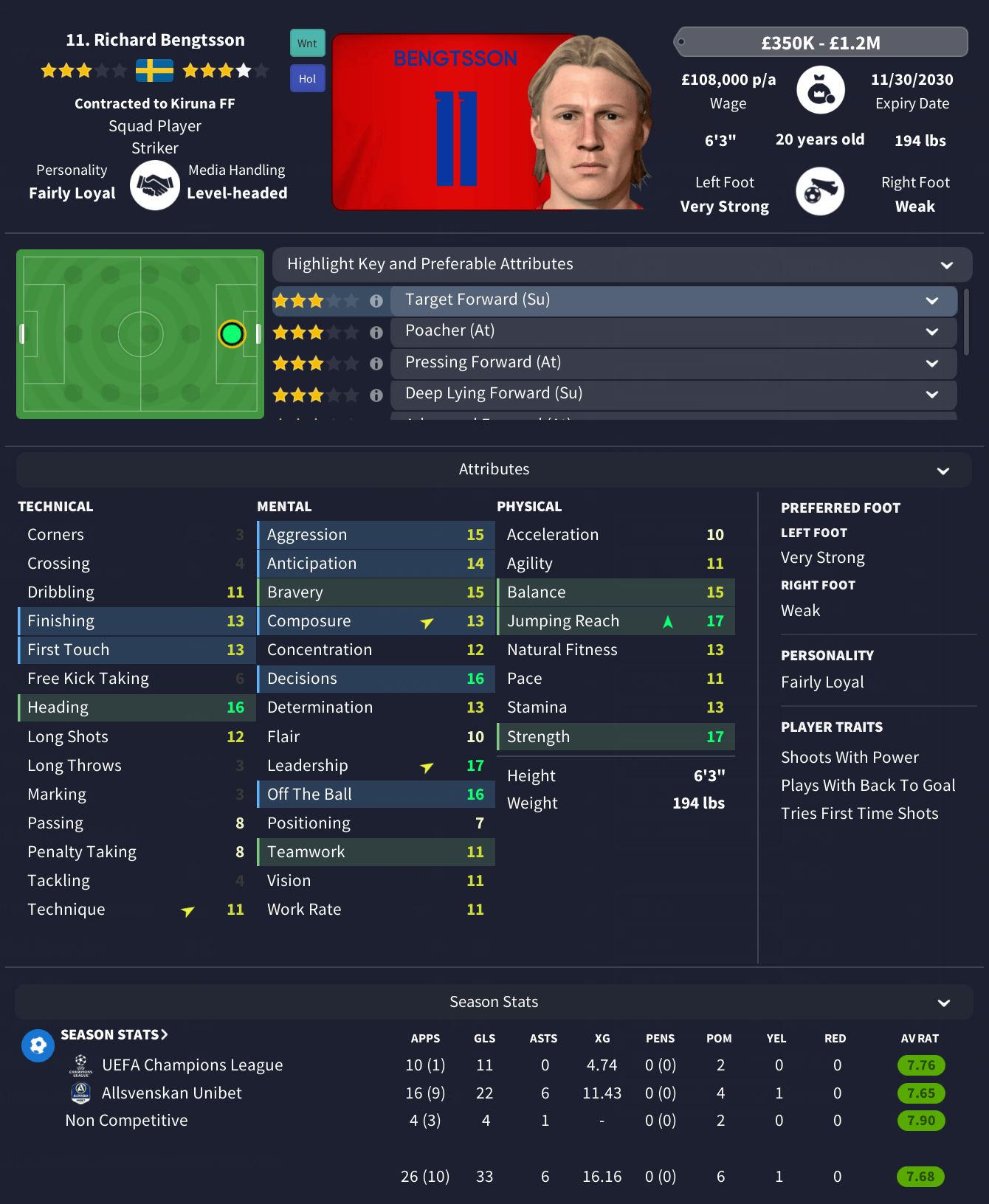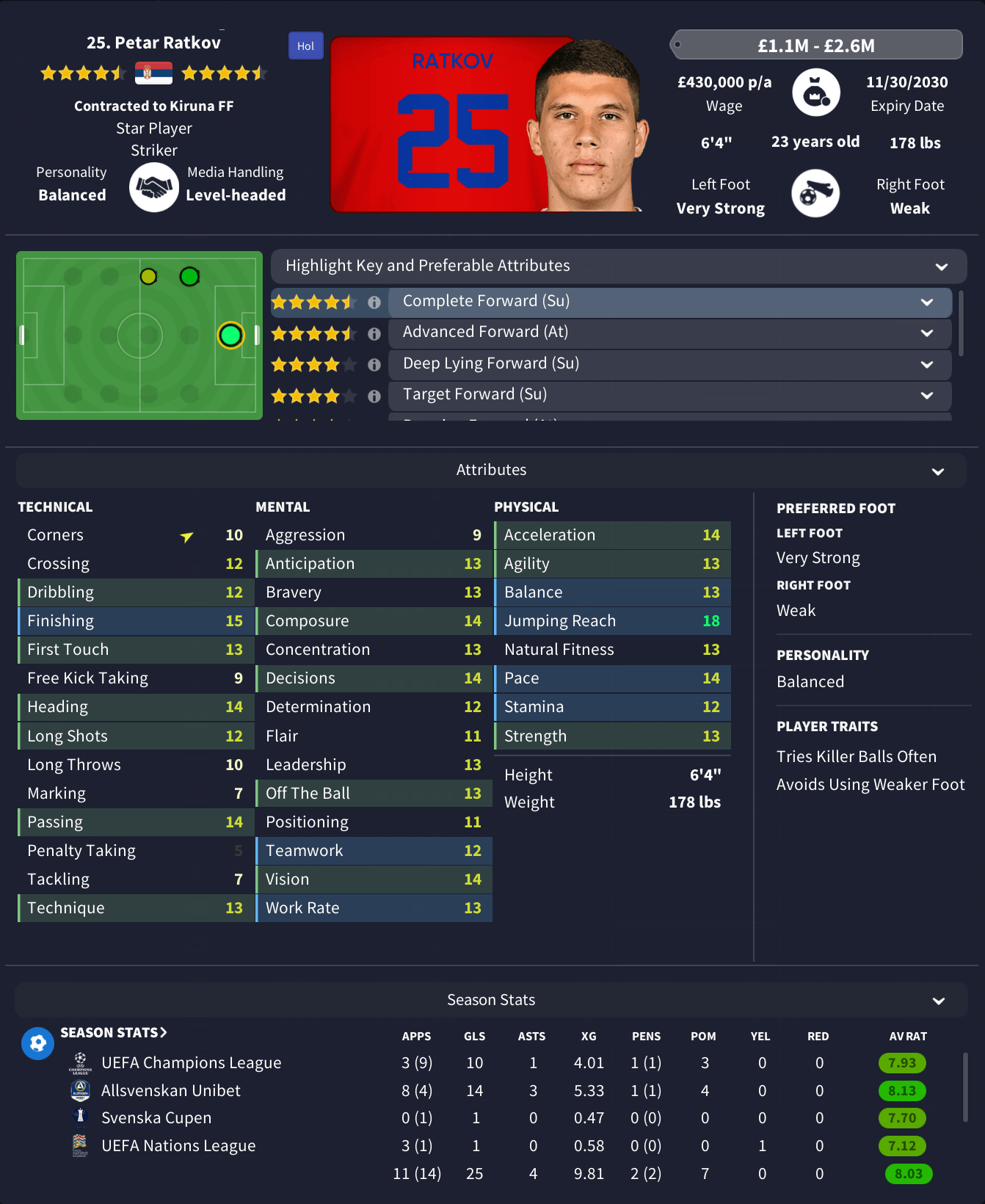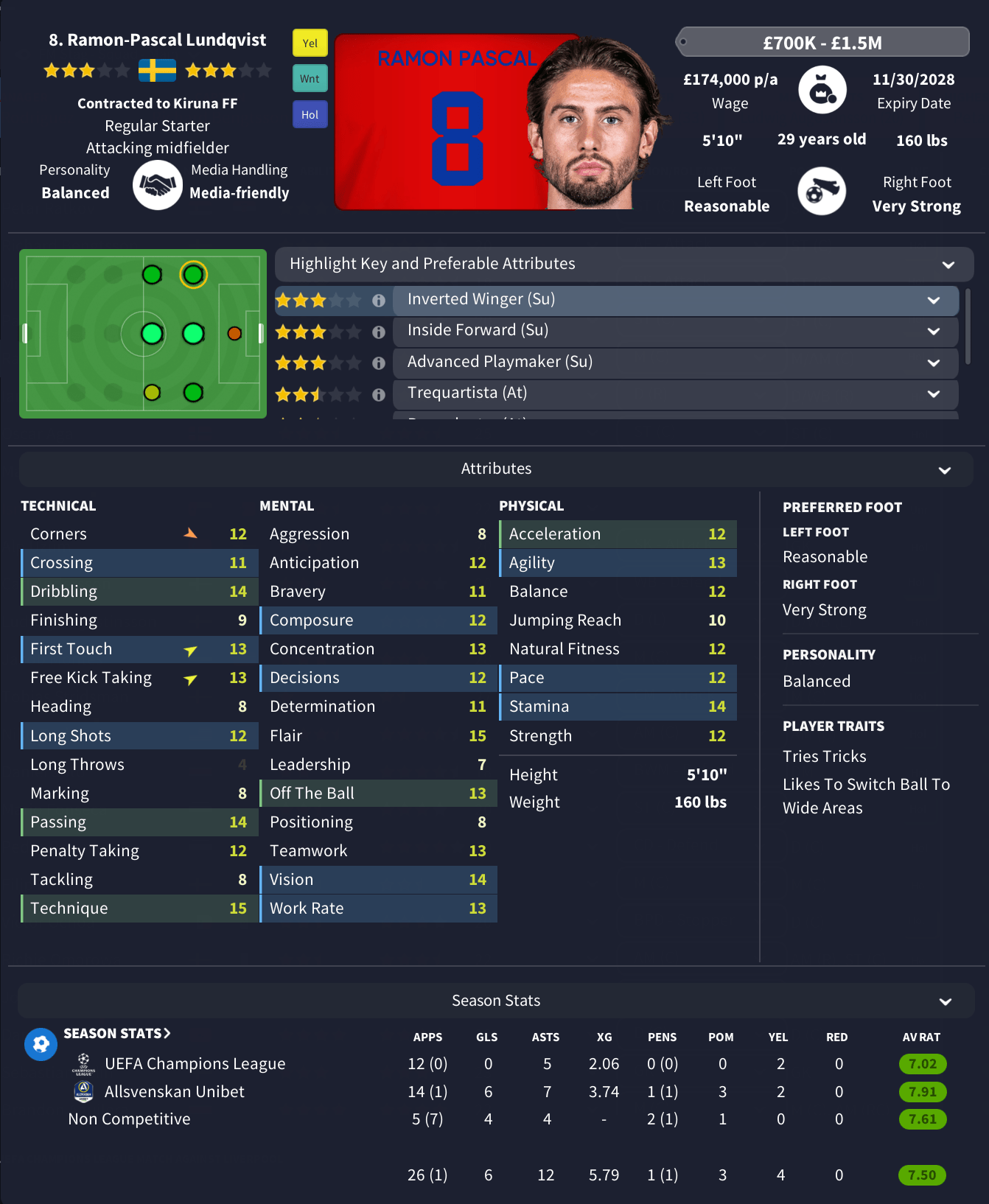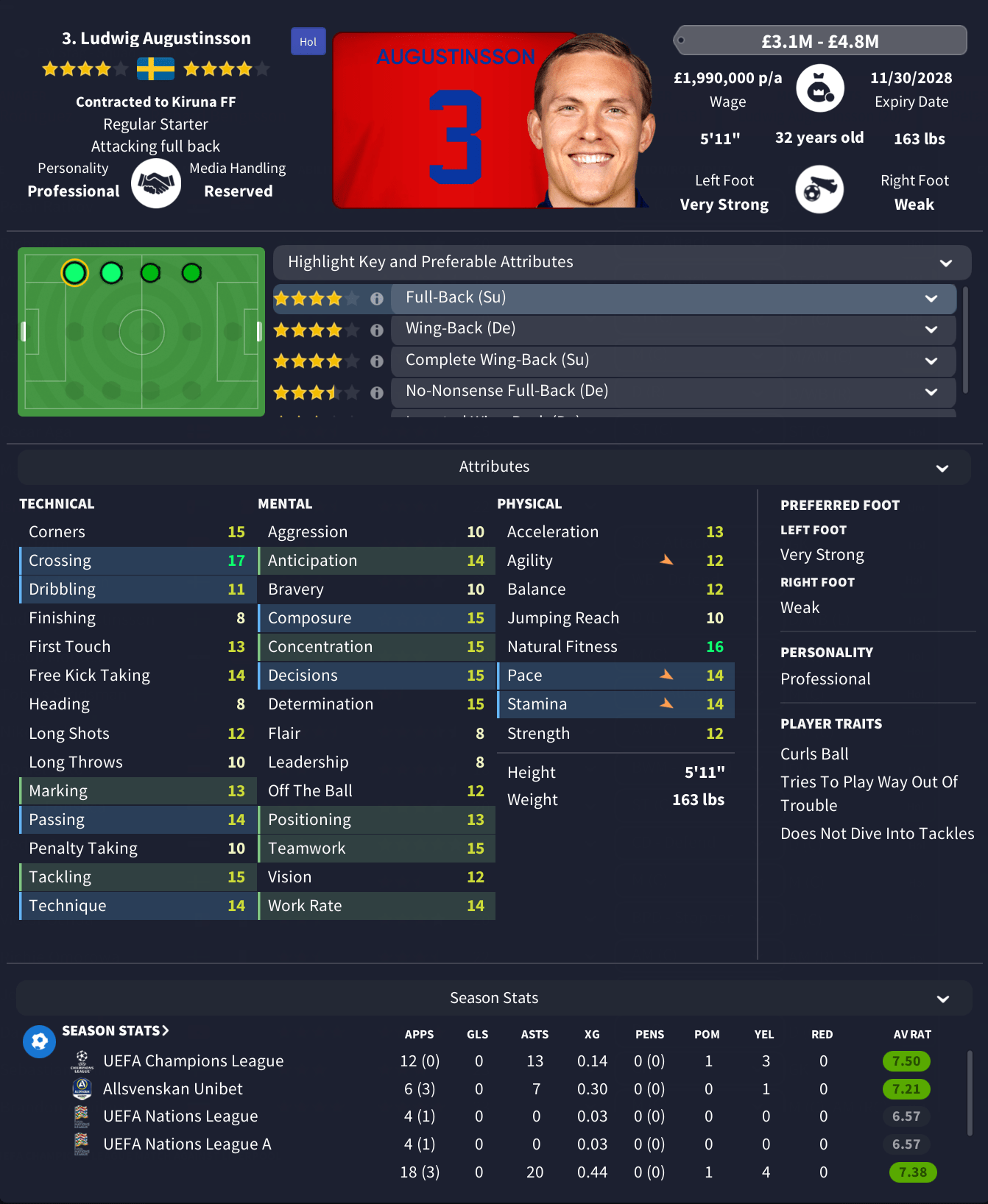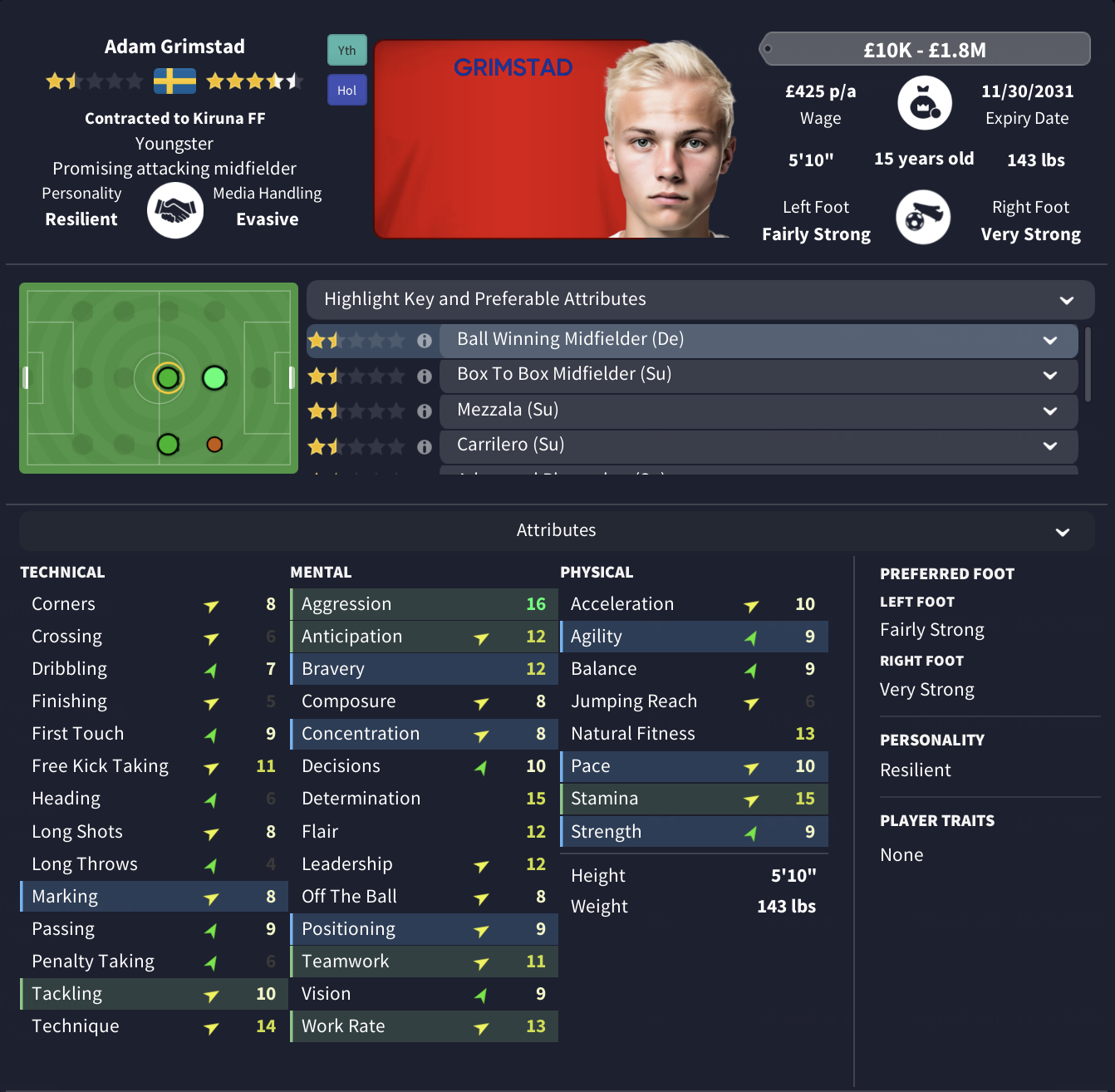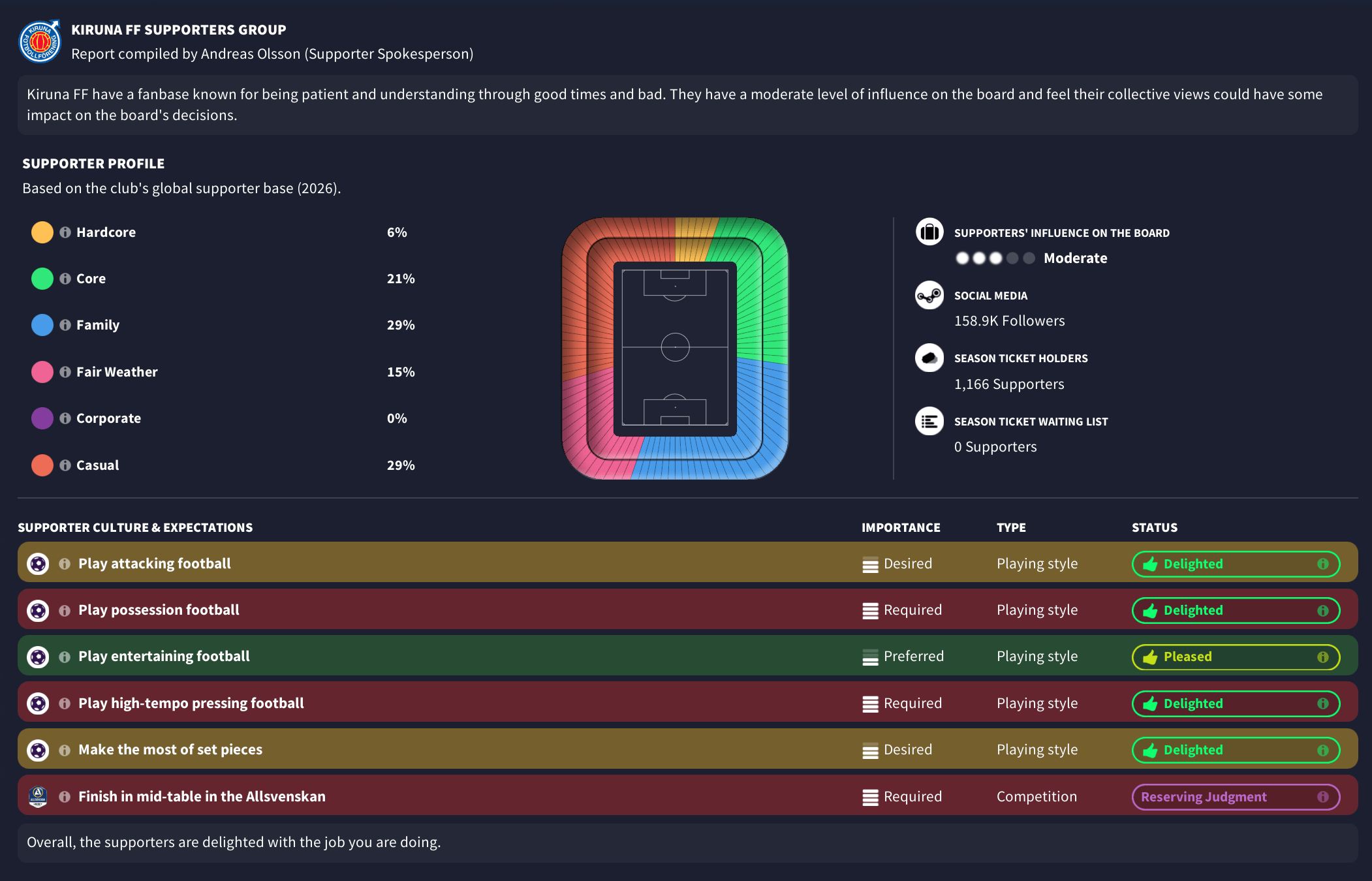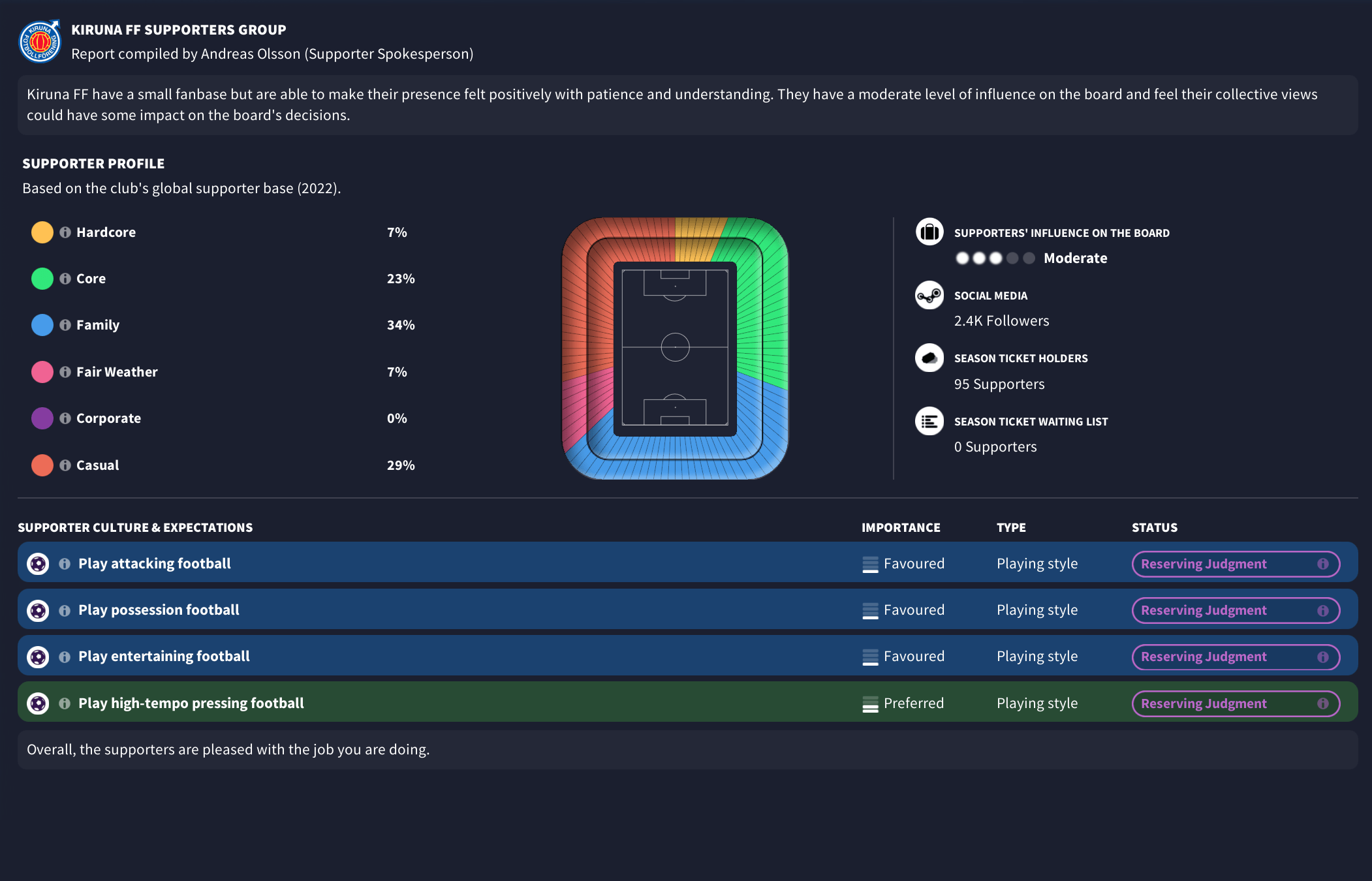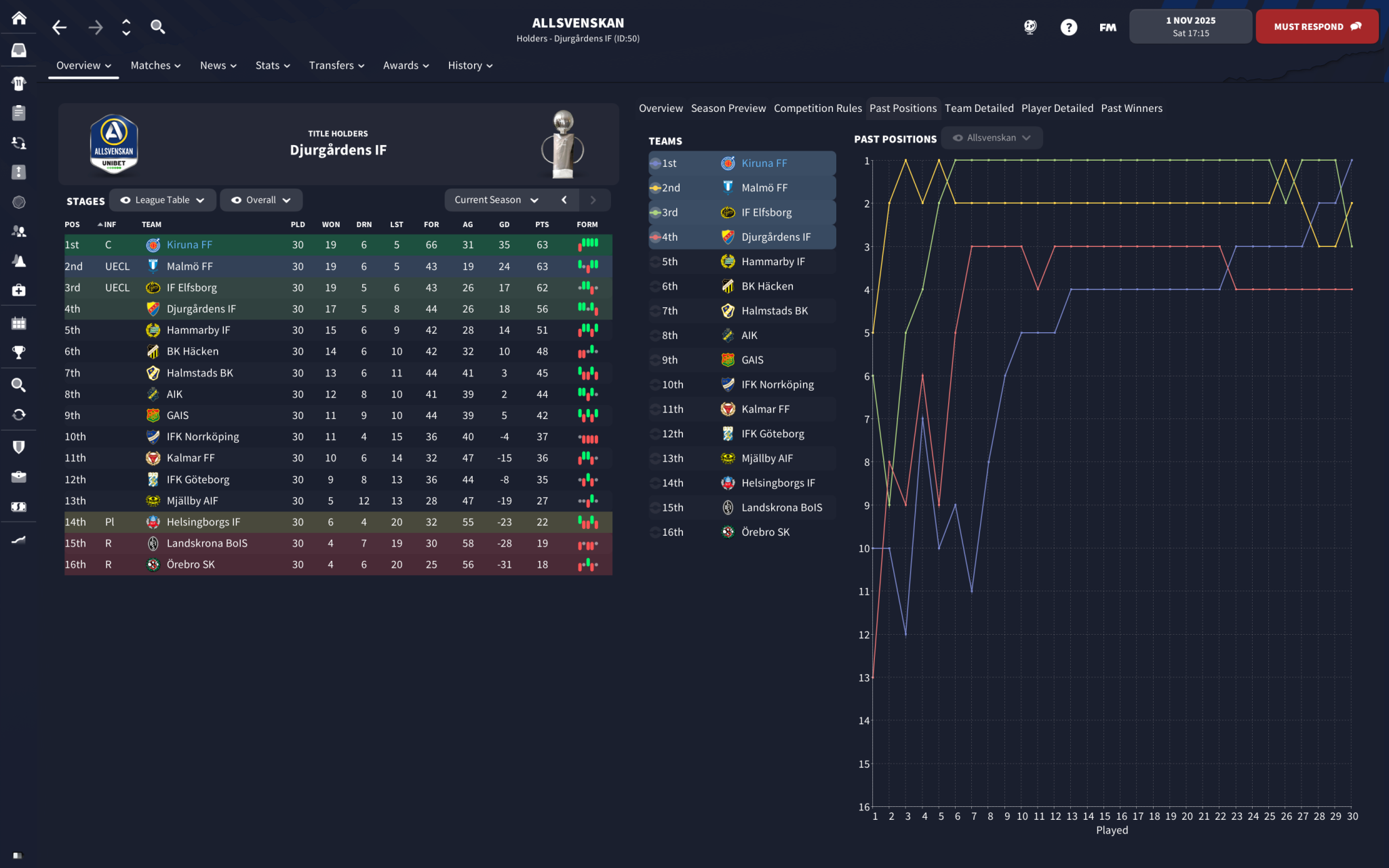Hello, hello, and welcome to Youth Intake’s new home!
If you’re new here feel free to catch up here. I will be updating you on the recruitment over the last two seasons, tactical changes and how the 2028 season unfolded. There has been so much movement in the playing staff that it’s been hard for me to keep up!
Recruitment
When it comes to the club’s recruitment strategy, I believe it’s essential to shed light on the significant player turnover we’ve experienced. There are three key reasons behind this constant flux of players.
Due to the club’s objective to “sign players to sell for profit,” We’ve accumulated a shit ton of players, with over 110 spread throughout the club. With that in mind, I am not afraid of selling players, as long it’s for the right price. This allows us to maintain a robust system that can readily replace any first-team member. I’ve come to rely on a combination of talents from our academy, Central American recruits, and experienced players to fill any gaps that may arise.
Our #LoanArmy has expanded far and wide, reaching clubs across Scandinavia, Slovakia, and the second tiers of the Netherlands and Belgium. This network allows us to provide valuable experience and development opportunities for our youth players. (cc: @OakyFM)
Our participation in European competitions, spanning three seasons now, has been a significant catalyst for our player turnover. Clubs are seemingly ready to snatch up my players every summer transfer window..
2027 Transfers:
Transfers In:
In the 2027 winter transfer window, we strengthened our squad with nine first team signings, including experienced international veterans to provide valuable experience to our young team. Moreover, as the European summer transfer window approached, we faced a significant exodus of nineteen players, including sixteen from our first team. To maintain competitiveness, we swiftly recruited six new players, comprising a starting goalkeeper, Swedish youth internationals, and senior internationals.
Notable Arrivals: Mamadou Fall (Free, IFK Mariehamn), Tim Olsson (Free, IK Sirius), Bryan Acosta (Free, Real Salt Lake), Aléx Roldán (Free, Nashville), Akinkunmi Amoo (Free, FC København), Adnan Ćatić (£33.5K, Helsingborgs IF), Michael Sáček (£65K, Sparta Praha), Alex Medina (£1.4M, Municipal), Svit Sešlar (£2.6M, Deportivo Pasta). Jewinson Bennette (Free, Sunderland), Patrik Waliś (Free, Lech), Otto Rosengren (£1.4M, Marseille for) Samuel Brolin (£600K, AIK), André Álvarez Pérez (£1.1M, Malmo), Ibuki Inaguma (£1.2M, Fukuoka Blaze).
Transfers Out:
Our outgoing transfers generated a remarkable club-record revenue of £138,208,200. Of the thirty-seven players we sold, twelve were from our youth teams, contributing £15.9M to our overall revenue. The remaining £122.2M came from the transfer fees of twenty-five first-team players.
Notable Departures: Tonihno (Borussia M’Gladbach, £3.8M), Niko Tsakiris (Sunderland, £4M), Ariagner Smith (SanderjyskE, £48K), Mario Fonseca (IF Elfsborg, £5.5M), Damjan Dakić (Ipswich, £7M), Ludwig Augustinsson (Marseille, £4M), Oscar Aga (Nice, £6M), Brandon Aguilera (RB Salzburg, £14M), and Petar Ratkov (Southampton, £15M).
It’s worth noting that we also experienced a few instances where players arrived and left the club within the same season. Akinkunmi Amoo joined us from FC København on a free transfer but departed for Wolfsburg (£26,000,000). Similarly, Mamadou Fall arrived from IFK Mariehamn on a free transfer and left for Brentford (£7,000,000).
Transfer Fees Paid: £16,250,000
Transfer Fees Received: £138,208,0200
Net Transfer Spend: -$121,979,700
Highest Incoming Transfer: Svit Sešlar from Deportivo Pasta for £2,600,000
Highest Outgoing Transfer: Akinkunmi Amoo to Wolfsburg for £26,000,000.00. We made a profit of £26M!!
2028 Transfers:
Much like the previous season, there was considerable movement within our squad. During the winter transfer window, we bid farewell to fourteen players, amassing £21.4M in total transfer fees. Among them were five first-team members, including Youth Intake legend Joe Hodge (PSV, £6M), Kiruna legend Tobias Stridsman (Vasalunds IF, £1.5K), and Michael Sáček (Porto, £2.8M). However, I didn’t let these departures weaken us, as we made fourteen incoming transfers for a total expenditure of £13.8M. I switched my recruitment approach, to target homegrown Swedish talents and I felt the team was bit unbalanced.
Notable Arrivals: Simeon Jovanovski (£6.5M, Malmo FF), Ismet Lashaku (£62K, BK Hacken) Ludvig Nåvik (£1.6M, Napoli), Elison Makolli (£775K, Malmo FF), Diar Selmani (£250K, IF Brommapojkarna), Matteo Perez Vinlöf (£2M, Bayern), Gent Elezaj (£900K, Hammarby IF).
With another European summer transfer window looming over, I wanted to make sure that I was prepared when European clubs came knocking for my players. To bolster our squad, I signed Montader Madjed, a long-standing target (RB Leipzig, £3.2M). Additionally, we secured the services of five players for the reserves, including highly rated Guatemalan youth international Jorge España (Municipal, £1.6M) and Czech youth international Andres Blanco (Jablonec, £50K).
On the flip side, we sold a total ten players, generating a remarkable £81.9M in transfer revenue. Among the significant departures were Alex Medina (Bournemouth, £25,000,000), Svit Sešlar (PSG, £18,000,000), and Jewison Bennette (Wolfsburg, £14,750,000). To further highlight the insane turnover we’ve experienced at the club, nine of the players sold had only just arrived last season.
Net Transfer Spend: -£83,953,700
Highest Incoming Transfer: Simeon Jovanovski from Malmo FF for £6,500,000.
Highest Outgoing Transfer: Alex Medina to Bournemouth for £25,000,000. We made a profit of £24,500,000!
Tactical Change
After using the 4-3-1-2 shape for several seasons, I must admit that while it has been enjoyable and quite successful in our domestic competitions, it hasn’t yielded favorable results during our European efforts, especially in the knockout stages. As a result, I decided to return to my tried-and-tested favorite formation, the 4-4-2. However, this time, I’m taking a different approach compared to previous versions (as seen in my SC Verl save) and opting for a highly fluid possession-based tactic.
The defense is anchored by a Sweeper Keeper on Defense, providing an additional option in distributing from the back and acting as an extra sweeper to clean up any potential defensive lapses. In front of the Sweeper Keeper, two Central Defenders on defense duty. Two Wingbacks on support duty on either side of the defense. Their role is crucial as they provide width in the attack, supporting the midfield while also contributing defensively on the flanks.
The midfield is well-balanced with two Central Midfielders on support duty. The left-sided Central Midfielder is given the freedom to roam from their position and make forward runs, adding unpredictability to the attacking play. On the other hand, the right-sided Central Midfielder is instructed to dribble less, shoot less often, and take more risks. This player’s role will involve dictating the tempo and providing creative passes to unlock the opposition’s defense.
The defensive winger role has become my favorite due to its impact on our playing style. They play a crucial role on the flanks of our central midfield, not only bolstering our mid-block shape and pressing intensity but also executing overlapping runs that effectively stretch the opposition’s defense. To maximize their effectiveness, I’ve added player instructions, urging them to roam from their positions, shoot less often, and get further forward. This encourages them to maintain width and push up the field, providing us with additional attacking options.
However, due to the demanding nature of this position, I’ve prioritized heavy rotation among the players on the wings. As a result, Montader Madjed and Rodrigo Palacios have both established themselves as my go-to wingers, delivering strong performances on a regular basis. Their contributions have been instrumental in our tactical approach this season.
Our striking partnership is incredibly dynamic and versatile. Richard Bengtsson, whose best role is as a Target Forward, has surprisingly thrived when deployed as an Advanced Forward or a Complete Forward on attack. Meanwhile, Mirsad Ziba, probably the perfect Pressing Forward, has been impressive this season since being shifted to the False Nine role. The two strikers complement each other perfectly, with Bengtsson utilizing his strength and aggression to make threatening runs behind the defense, while Ziba drops deep to drag defenders out of position, thus creating space for the midfielders, right winger and Bengtsson.
In Possession:
During the build-up and attacking phases, I’ve opted for much shorter passing to maintain possession and work the ball into the box to create high-quality scoring opportunities. The narrow width will allow the players to stay compact, creating passing triangles, and exploiting central areas, while passing the ball at at slightly higher tempo.
In Transition:
I wanted to adopt a more proactive approach. The goalkeeper and defense are instructed to distribute to the center backs and fullbacks, encouraging a fast buildup from the back. I’ve also instructed the team to counter-press, aiming to win the ball back quickly after losing possession.
Out of Possession:
When not in possession, I wanted the team to implement a mid-block to maintain a structured defensive shape. The players have been instructed to press much more often, putting pressure on the ball carrier and trying to win back possession early in the opposition’s half. The team also has the option to drop off more when facing a counter-attacking threat, aiming to deny space in behind the defense and remain compact.
2028 Season
Allsvenkan
Despite initial concerns about the player turnover, it had little impact on our performance, and we comfortably secured our third title in four years. Our defensive prowess was outstanding, conceding a mere 18 goals throughout the season, breaking our previous record set two years ago, and impressively keeping 17 clean sheets. Samuel Brolin emerged as Sweden’s top goalkeeper, boasting the best save and prevented save ratio, and earning the title of Sweden’s first-choice keeper.
At the heart of our defense, André Álvarez Pérez and Simeon Jovanovski formed an exceptional partnership at center-back. Both players ranked in the top four for pass completion, with Álvarez Pérez standing out with the highest tackle ratio in the league. Moreover, the depth provided by Elison Makolli and Adnan Ćatić from the bench ensured consistent defensive performances whenever called upon.
Our midfield duo of Joakim Björnquist and Ludvig Nåvik was truly fantastic. Both players excelled in various creative metrics, such as key passes, open play key passes, and progressive passes. Nåvik’s impressive tally of fourteen assists led the league, proving his instrumental role in creating scoring opportunities. Additionally, Kiruna Icon Ramón Lundqvist continued to shine despite being a squad player, displaying exceptional creativity with the highest number of key passes per 90 (4.78) in the league, even with limited minutes compared to other top players.
In the attacking department, Mirsad Ziba and Richard Bengtsson continued to be prolific goal-scorers for us. These two players consistently outperformed others, even those with better attributes for their respective roles. Ziba, despite playing as a False 9, topped the goal-scoring charts with an impressive 22 goals and 10 assists. Meanwhile, legend Richard Bengtsson did not disappoint, finishing the season with 17 goals and 4 assists.
The season’s performance was exceptional, as we finished a remarkable sixteen points ahead of IFK Göteborg. Last year’s champions, Malmö, struggled and finished in 4th place with fifty-seven points, a considerable drop from the previous season. Although we scored fourteen fewer goals compared to the previous season, we still outperformed other teams by a significant margin, tallying twenty more goals than the nearest competitor. With this success, we look forward to competing in the Champions League next season.
Europa League
After locking in a disappointing second place last season, we punched our ticket to the Europa League Second Qualifying League Path Round. The real fun began when we squared off against Hibernian. A smashing (8-1) victory at home and a cool (5-1) win in Scotland. Three of our die-hard fans were there to witness the show and cheer us into the next round.
Then came AFC Chindia Târgovişte. We didn’t mess around, sealing a tidy (2-0) win at home and hanging on for dear life in a nail-biting 5-4 win in Romania. Things got really serious when we had a date with those Norwegian heavyweights, Molde, in the playoff round. Okay, we stumbled a bit with a (1-2) loss in Norway, but back in the Arctic Circle, we made it look easy with a comfy (3-1) victory, bagging our ticket to the Europa League proper.
Our schedule didn’t pull any punches, throwing us into the ring with heavyweights like Club Brugge, Napoli, Villarreal, Manchester United, and Montpellier. But it wasn’t all giants on the horizon; we had some winnable matches lined up against CFR Cluj, Metalac, and Cracovia.
We kicked things off on a high note, with a solid (3-0) victory against Club Brugge. The following match had us on the road to Napoli, and I am still not sure how we held on that (1-0) win. Coming back to Kiruna, we confidently handled back-to-back fixtures, securing comfortable wins against CFR Cluj (1-0) and Metalac (3-0).
Now, our trip to Villarreal – that one was a tough pill to swallow. The Yellow Submarines proved to be a proper challenge, and ran us out of Spain with a (3-0) loss. We finished the match with zero shots on target. Things took a turn when Manchester United paid us a visit. I am still surprised that we were able to handle Utd this easy, winning the match (3-0).
Our meeting with Montpellier didn’t go as planned, though. A bit of a rough day in front of the goal led to a deserved (1-2) loss. But hey, we wrapped up the league phase with a bang, finishing strong with a (3-0) victory against Cracovia. That win sealed our spot in the Round of 16.
The draw led us to face Napoli away, with a compelling win with a scoreline of (4-3) in our favor. The return leg looked promising but we fell behind 0-1 with just 30 minutes on the clock. However, we pulled through, and wrapped it up with a (2-1) win.
The quarterfinals had us up against a superb Athletic Bilbao side, and luck was on our side as both their star strikers were sidelined due to injuries. Taking full advantage, we asserted ourselves over the two legs, winning (6-2) on aggregate .
Next up was Sporting Club in the semi-finals. The first leg was a rollercoaster, ending in a frustrating (2-2) tie. Our own Jovanoski saw red in the second half, giving Sporting an opening to level the match. But the second leg was a different story – we fielded a rotated squad, and managed to secure a (2-1) victory in front of our fans. Mirsad Ziba fired in the winning goal early in the second half. FM would throw us a curveball, as Mirsad Ziba found himself sent off for a horrible tackle in the 80th minute.
Our journey took us all the way to the Cardiff Community Stadium for our inaugural European final, against powerhouse, Manchester United. With our star striker Mirsad Ziba out, Dušan Dimitrijević stepped into the limelight in his absence. United’s lineup included elite stars like Bruno Fernandes, Nicolas Jackson, and Victor Osimhen. The match was a real seesaw, with both sides going back and forth. We found ourselves trailing 2-0 by the 35th minute, courtesy of two brilliant counter-attacking goals from Nicolas Jackson.
At halftime, Richard Bengtsson, Simon Jovanoski, Perez Vinlöf, and Ortega were subbed off after a torrid first half. The changes injected a bit of energy, and we fought our way back when Dimitrijević headed in a corner. Our joy, however, was short-lived as a mix-up between Victor Osimhen and Victor Lindelof in our own half gifted United another goal, leaving us trailing by two goals once more. Just five minutes later, Dušan headed in another corner kick, giving us a glimmer of hope.
In the end, our efforts fell short, and the match finished (2-3), with Manchester United having the last laugh. Though the outcome wasn’t in our favor, our journey to the final marked a significant milestone for Kiruna FF.
Player of the Season
Mirsad Ziba adjusted well in his new role as False 9, finishing the season with 40 goals and 20 assists from 42 (4) appearances. The stats above don’t include the three goals he scored in last season’s Champions League knockout rounds and two goals scored in the Svenskan Cup. For the last two seasons, Ziba has drawn interest from more than thirty clubs through out Europe, fortunately for us, none of those clubs are in the top 5 leagues in Europe.
Youth
Finances & Infrastructure
Finances
Our recent transfer dealings have put us in an incredibly strong position with a hefty balance of £168 million. A substantial chunk of our transfer budget has been shifted to our wage budget. As a result, we now have the league's largest wage budget, not only in our league but across all Scandinavian leagues, standing at £73.7 million per year. Yet, we're only spending a fraction of that, with our actual annual wage expenditure of £9.5 million.
We've been very selective in the transfer market, opting for players who not only fit our system and recruitment strategy but also have potential resale value. This approach has paid off, as we've managed to turn a profit on (what I am guesstimating) 99% of the players who have joined the club in the last six seasons.
Infrastructure
We finished a season with lovely message from the chairman stating “Our plans for a stadium move have unfortunately had to be scrapped. Although the board would have liked to move forward with the plans, the local council have intervened and refused to grant full planning permission. The club had set an objective of building a new stadium but are no longer proceeding with their plans and they are expected to continue in a different direction for the foreseeable future.”
LOL
Thanks for making it all the way down here! This will be my second to last Kiruna FF update. The next post will be a lovely summary of the last few seasons in the Arctic Circle.
Best,
José
















